Last week at Family Inventors’ Lab, we covered Animal Classification, learning about all the different types of animals. This week, we studied the different types of habitats that animals live in, and next week will focus on how animals adapt to each of those habitats. (And how humans invent things that help them adapt to various circumstances.)
Science Activities
Habitat Sorting game: We laid out 5 pieces of fabric, each representing a habitat. On each one, we placed a photo of a human home in that habitat. (See below.) Then we put out lots of animal puppets and children were encouraged to sort them into the right habitat.
I Spy Camouflage Game. I did a Bing Image search for camouflage, (then filtered the license down to “free to share and use”) and then picked and chose several images from there… trying to find animals that were hard to spot, but not too hard. (It turned out that these were just right for our 5 and 6 year olds, but a little too challenging for our 3 to 4 year olds, so I’ll add some easier options next year.) I made up two sheets for a sort of “I-Spy” game. You can download the free printable here.
Camouflage Sort. We put out 12 plastic animals, and three bowls of sensory materials (aquarium gravel, ground cork, and plastic pellets) and encouraged children to place the animals in the bowl where they could best hide. Two other ways to explore camouflage: a stuffed animal hunt/plastic animal hunt where you hide many animals in the classroom or outside, taking advantage of camouflage where they can blend in, and have kids search for them. An indoor game where children are encouraged to look at what clothes they are wearing, then find the place in the room where they would best blend in.
Two other ways to explore camouflage: a stuffed animal hunt/plastic animal hunt where you hide many animals in the classroom or outside, taking advantage of camouflage where they can blend in, and have kids search for them. An indoor game where children are encouraged to look at what clothes they are wearing, then find the place in the room where they would best blend in.
Habitat Match. I wanted a game where the kids took pictures of animals and sorted them into their habitats. The Wise Owl Factory has two really nice options, one with cute animal drawings and one with photographs. Preschool activities also has a good alternative.
Quiz on Habitats and Adaptations. Next week, we will study Adaptations. This quiz was a preview of that… it asks questions like: “A polar bear has thick fur and fat to keep it warm in the Arctic. How would you stay warm there?” Here’s a free printable of this quiz.
I think this is a great idea… but it didn’t quite engage – the kids mostly walked past this table…. I may convert it into a lift the flap game – the simplest way to do this is just to format it so I can place post it notes over the answers so they have to flip them up to see them. Seeing something kinesthetic to do often attracts the kids more than a piece of paper does.
Art Projects
Make a clothespin creature: Last year, we made egg carton creatures. This year, we did clothespin creatures. We offered clothespins, pipe cleaners, cardstock, googly eyes, pompoms and more, plus we had a sheet with lots of ideas for different types of clothespin creatures to make. (You can find sources for all these ideas on my Pinterest page at www.pinterest.com/bcparented/clothespin-creatures/)
Here’s some of our final products – check out the turtle who pokes his head out of his shell when you open the clothespin!
If you want alternatives to the clothespin creature, check out my post on Making Critters.
Build a Habitat: Then kids went to the collage station and used cardboard bases and recycled materials to build a habitat for their creatures. They were encouraged to think about shelter, bedding, and food in their habitats.
Make a fish habitat: We had paper “fish bowls,” aquarium rocks, blue paper squares and foil for water, some plants, and fish from shiny origami paper.
Group art: Last year, we created a spider web with tape. Kids glued onto it bits of plants, and paper spiders.
Math Play: Bear Count. We put out Baby Bear Counters and two dice. Plus rules (PDF) for four different levels of play. That way our older kids (who read) could decide what level to play, or for our younger non-reading kids, their parents could choose.
Rules are:
- Level 1 (youngest kids): Put one bear on #1 card, 2 bears on #2 and so on.
- Level 2: roll one die, and place that many bears on the matching card. If the card is full, roll again.
- Level 3: Roll 2 dice, add those numbers together. Place that many bears on the matching card. If the card is already full, roll again.
- Level 4: Roll 2 dice. You can add, subtract, multiply or divide to pick what number of bears to use. If all possible cards are full, you roll again. Your goal: to fill the numbers with as little re-rolling as possible.
Imaginary play: We had a tent and camping equipment set up – it’s a human habitat that can be taken out into the woods.
Free Play
Water table: Filled with water, ice, plastic trays to be ice floes. Then we put out plastic marine mammals, penguins, seals, and arctic people with sleds and igloos.
Sensory Table: Last year, we filled with popcorn kernels, assorted animals and wood bits. This year, it was a Build a Zoo activity, with brown rice, plastic animals, and fences.
Build a habitat: Plastic animals and trees to play with. Or Tree Blocks and plastic animals.
Building Toy: We put out our Lincoln logs with a picture of a log house in the woods to tie into the idea of how humans build homes in various habitats.
Teaching the Concepts – Opening Circle
The Big Idea: During opening circle, we explained to kids that habitat meant home. We talked about the things we need for a comfortable home. Since it was a cold winter day, the kids said that houses keep us warm and dry. We agreed that’s one purpose – but if you’re in a really hot place, we might need a shelter to keep us cool and shaded. We agreed it was important to have food in your home, and a comfy place to sleep. It’s also a handy place to stash your stuff that you don’t need right now, but will need in the future. We showed pictures of homes from several habitats around the world.
Then we talked about what different animals need in their home. We held up puppets and asked what would be a comfy home for that kind of animal. We wrote key things on the board: water, food, a place to sleep, a way to protect themselves from the weather and a way to hide (from their predators or from their prey.) One idea we shared was that certain animals can only live in certain places. Polar bears do great in the arctic, but not in the desert. A camel couldn’t live in the Arctic. Whales have skin and blubber that protect them from cold ocean water, and many animals have camouflage that protects them.
Book: Where do animals live – a non-fiction overview of habitats
Song: Sing to the tune of Mulberry Bush / This is the Way we Wash Our Hands. I found this at http://perpetualpreschool.com/animal-habitat-songs/#more-1922 but I adjusted the wording a bit… Hold up a puppet, ask where it lives, then sing a version of this song:
- Forests are where the deer live, the deer live, the deer live… the forest is where the deer live, It’s their habitat.
- Deserts are where camels live…
- Oceans are where octopi live…
Reviewing the Ideas in Closing Circle
Book: Whose House by Seuling. A mildly silly book about all the houses that are not right for a boy
Reprise Song with New Puppets: After we sang each verse and placed the puppet in its habitat, we asked them what helps that animal live well in that habitat.
We tied this into last week’s discussion of Animal Classification and talked about how fish are only found in watery habitats like oceans, rivers, and ponds. Birds are found in lots of habitats, but they’re different depending on where they live: birds in the jungle are brightly colored and eat fruit and nuts, penguins are birds in Antarctica and have dense, thick feathers and a layer of fat to keep them warm, and eat fish. This also previews next week’s Adaptations class.
Book Recommendations
Where Do Animals Live? by Kalman. Ages 5 – 7. Good photos, a nice non-fiction overview of the basic ideas about habitats, and an introduction to 7 habitats (forest, desert, mountain, grassland, very cold, wetland, and ocean) and one animal in each habitat.
The ABCs of Habitats also by Kalman. Age 7 – 10. This is more of a resource book for a classroom library, rather than something you would read aloud in one sitting. For example, grasslands is a two page spread which covers content like: “In North America, grasslands are called plains or prairies. In South America, they are called pampas. Animals called guanacos live on the pampas.” Photos and illustrations.
Whose House? by Seuling and Chorao. One page shows naturalistic illustrations of animals in their homes and describes that home. Then the next page shows a child trying to fit into that same home and says it’s “not for me!” Sample: “Brown bats dwell in a pine hotel, feet over head, no need for a bed. It’s fine for bats… but not for me!” Nice information about a variety of animal homes, kids love to shout out “not for me” on each of the pages. The “not for me” illustrations anthropomorphize the animals – showing a frog reading a newspaper, or a queen bee in robes and a crown, so if you prefer your illustrations to be realistic, this book is not for you.
I See a Kookaburra!: Discovering Animal Habitats Around the World by Jenkins and Page. For 5 – 7 year olds (or 4 year olds with patience to look for details.) One page spread shows a detailed collage of a habitat with lots of animals hidden in and amongst the plants and other features. The next page spread “lifts off” all the cover, showing the full bodies of all the animals, in the same location / position as on the previous page, so it’s easy to line them up with each other. It also offers information about each animal. So, for example, on the jungle page, we see a toucan’s beak poking out from behind leaves, a jaguar on a branch, covered up by leaves, an iguana shaded by a fern, etc. Click on the link for the Amazon listing, where I included photos with my review of the book.
Whose House Is This? by Gregoire. Age 4 – 7. Nice colorful nature-based illustrations. It’s a fun guessing book, where it asks something like “whose house is this, dangling on a tree” and we see a branch and some green frog legs. Then you turn the page and it tells you more about the red-eyed tree frog and its home. “This is a red-eyed tree frog’s leaf. During the day, the frog may sleep under a leaf of a rain forest tree…” The non-fiction text is a little dry, but the guessing game aspect makes it a good read-aloud.
What Am I? Where Am I? by Lewin. Introduces 5 animals. It shows a circle with an isolated picture of some part of the animal (the otter’s nose, the tiger’s whiskers) on one page and asks “what am I?” On the next two pages, we see a picture of more of the animal, and it says “I am a _____. Where am I?” On the fourth page, we see that animal in its habitat – “I am in a forest.” It’s a fine book to get from the library to have as one of the books on the shelf – it’s interesting, but a little limited in content. You could take this idea and easily assemble your own book featuring other animals using images from google image search – it could be a fun project to do with a child. Age 4 – 5.
Castles, Caves, and Honeycombs by Ashman & Stringer. “Many places make a home: a heap of twigs, a honeycomb, an aerie with a bird’s eye view… a warren in a grassy glen… a home’s a house, a den, a nest. A place to play, a place to rest, a place to hug. A home is someplace safe and snug.” A nice read-aloud with lovely illustrations, that shows several animal homes and ties them in nicely to the child’s own experience of home. Good for class, but sweetness of it would also make for a good bedtime story. Age 3 – 6.
What Can Live in a Desert? by Anderson. Age 4 – 7. (The series also includes books on Ocean, Grassland, Mountain, Lake, and Forest habitats.) A nice overview of habitats and the adaptations seen in animals that live there. Each page contains a photograph and one sentence, such as: “Desert geckos have webbed feet. They can walk on top of the sand without sinking.” The word webbed is bold face, and is defined in the glossary. At the end of the book, there’s a couple pages of “fun facts”. A simple non-fiction overview. It would be nice to have the full set so kids could compare side by side what the differences are between the animals in each habitat.
Weird But True Animal Homes by Bredeson. Ages 5 – 7. Covers antarctic shrimp, cave salamanders, Eastern wood frogs, naked mole rats and more. Includes photos. Each page has a couple factoids about a creature, then the catchphrase. “It’s weird but it’s true.” Sample “Black smoker tube worms. What a big hot tub! Jets of hot water shoot out of cracks at the bottom of the deep sea. Giant tube worms grow near the jets. They do not have mouths or stomachs or any way to poop. The worms soak up everything they need to live from the hot water… It’s weird….”
Home Sweet Nest and Home Sweet Web
by Salzmann. (Series also includes: Burrow, Cave, Den, and Tree.) Book description on Amazon says ages 4 – 7. I think best for 5 or 6 to 7. Excellent macro photography. Sample text: “Grass spiders make funnel webs. The spider waits for the prey to land on the web. Then it runs out of the funnel and grabs the prey.” They’re nice non-fiction books about that type of home. But the title implies it might compare these other homes to human “home sweet homes” and it does not.
The Wonderful House by Margaret Wise Brown. This Little Golden book was written in 1950, and you can tell by its style. It is a charming book that shows a home and says “but who lives here?” For example, after a picture of a bird house, it says “two little birds that fly in the air live here.” After a picture of a cave, where we see animal bones, it says “a big old lion and his lion family. They live here.” I don’t love the end where something is flying through the air, and you’re supposed to guess what it is, and it’s a house “with wings to fly with and wheels to roll on and pontoons to float on and balloons to hand on… and a boy and a girl live in this house… and they all go flying through the air to where they want to go.” I like kids’ non-fiction, and I like whimsy and fantasy…. its just odd when one veers off into the other one.
Resources to Learn More
A full unit on animal classifcation and habitats, focused on aquatic birds. I think it’s suitable for upper elementary (ages 8 – 10) classroom or home school, but you could adapt some of the ideas for younger students: www.xtec.cat/monografics/cirel/pla_le/nile/barbara_perolada/worksheets.pdf
Complete lesson plan on animals and habitats. Includes science standards for 1st grade: www.engageny.org/sites/default/files/downloadable-resources/ckla_g1_d8_anth.pdf
- Explain what a habitat is
- Explain why living things live in habitats to which they are particularly suited
- Identify the characteristics of the Arctic tundra habitat
- Identify the characteristics of the Arctic Ocean habitat
- Explain how Arctic animals have adapted to the Arctic tundra and Arctic Ocean habitats
- Identify the characteristics of the desert habitat
- Explain how desert animals have adapted to the desert habitat
- Classify animals on the basis of the types of food that they eat (herbivore, carnivore, omnivore)
- Identify the characteristics of the grassland habitat
- Explain how grassland animals have adapted to the grassland habitat
- Match specific plants and animals to their habitats
- Identify the characteristics of the temperate deciduous forest habitat
- Explain how temperate deciduous forest animals have adapted to the temperate deciduous forest habitat
- Identify the characteristics of the tropical rainforest habitat
- Explain how tropical rainforest animals have adapted to the tropical rainforest habitat
- Classify water habitats as either freshwater or saltwater habitats
A video on Habitats – good for ages 6 – 9 or so: Home Sweet Habitat.






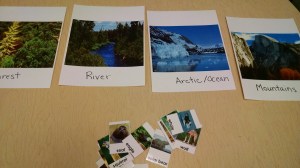
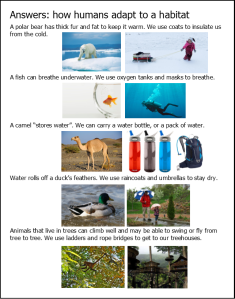






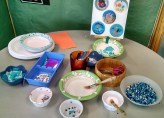

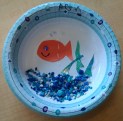
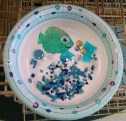

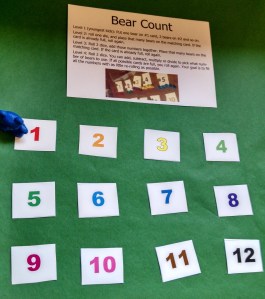




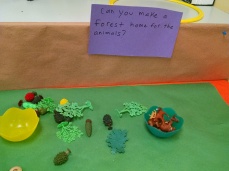


[…] Animal Habitats […]
LikeLike
[…] Animal Habitats […]
LikeLike
[…] Rain, Dirt / Soil, and Air. We talked about what animals and humans need (a review of idea from our Habitats and Adaptations classes) and how that’s similar and […]
LikeLike
[…] Theme – Habitats […]
LikeLike
[…] Theme – Habitats […]
LikeLike
[…] Biology: Skeletons; Habitats, Adaptations, Eggs, Seeds and Plants […]
LikeLike
[…] Biology: Skeletons; Habitats, Adaptations, Eggs, Seeds and Plants […]
LikeLike
[…] spring quarter, we’re adding in a unit on the Human Body, but that meant we needed to combine Habitats and Adaptations. Covering biomes earlier in the year can give the kids some foundational knowledge […]
LikeLike
[…] Animal Habitats […]
LikeLike
[…] environment will they be working in: cold? hot? wet? What did we learn about when we studied habitats that you could use in designing your robot to be sure that they are well suited to their […]
LikeLike
[…] Habitats. Make blue jello with Swedish fish floating in it? Bring animal crackers, give kids a paper plate labelled with place they might find the animals (desert for camel, jungle for monkey, etc.) When they get their crackers, they first sort them into where they belong, then eat them. Or get cheddar bunnies and goldfish to mix together, and kids have to sort into which lives in water, and which lives on land. […]
LikeLike
[…] off the metal for that metallic “tink” sound. When we study animal adaptations and habitats, we use sensory materials for our “bird beak adaptations” activity and for a camouflage […]
LikeLike
[…] Use clothespins, pipe cleaners and googly eyes to make clothespin creatures. […]
LikeLike
[…] environment will they be working in: cold? hot? wet? What did we learn about when we studied habitats that you could use in designing your robot to be sure that they are well suited to their […]
LikeLike
[…] and Farm Theme. Or check out my preschool STEM posts about Animal Classification, Adaptations, Habitats and […]
LikeLike
[…] Recognize the structures of plants and animals. Learn how they use those parts to help them survive in their habitat. […]
LikeLike
[…] Learn More: Inventors Of Tomorrow […]
LikeLike
[…] Also, be sure to check out my recommended books that tie into our Adaptations class theme, which include: Who Has These Feet? (YouTube) by Hulbert and Brooks. What Do You Do with a Tail Like This? (YouTube) by Jenkins and Page. Moth. An Evolution Story by Thomas, illus. Egneus. (Preview video.) and Unbeatable Beaks by Swinburne, Paley. Age 4 – 7. (YouTube) And my ideas for hands-on activities for teaching the science of animal adaptations and habitats. […]
LikeLike